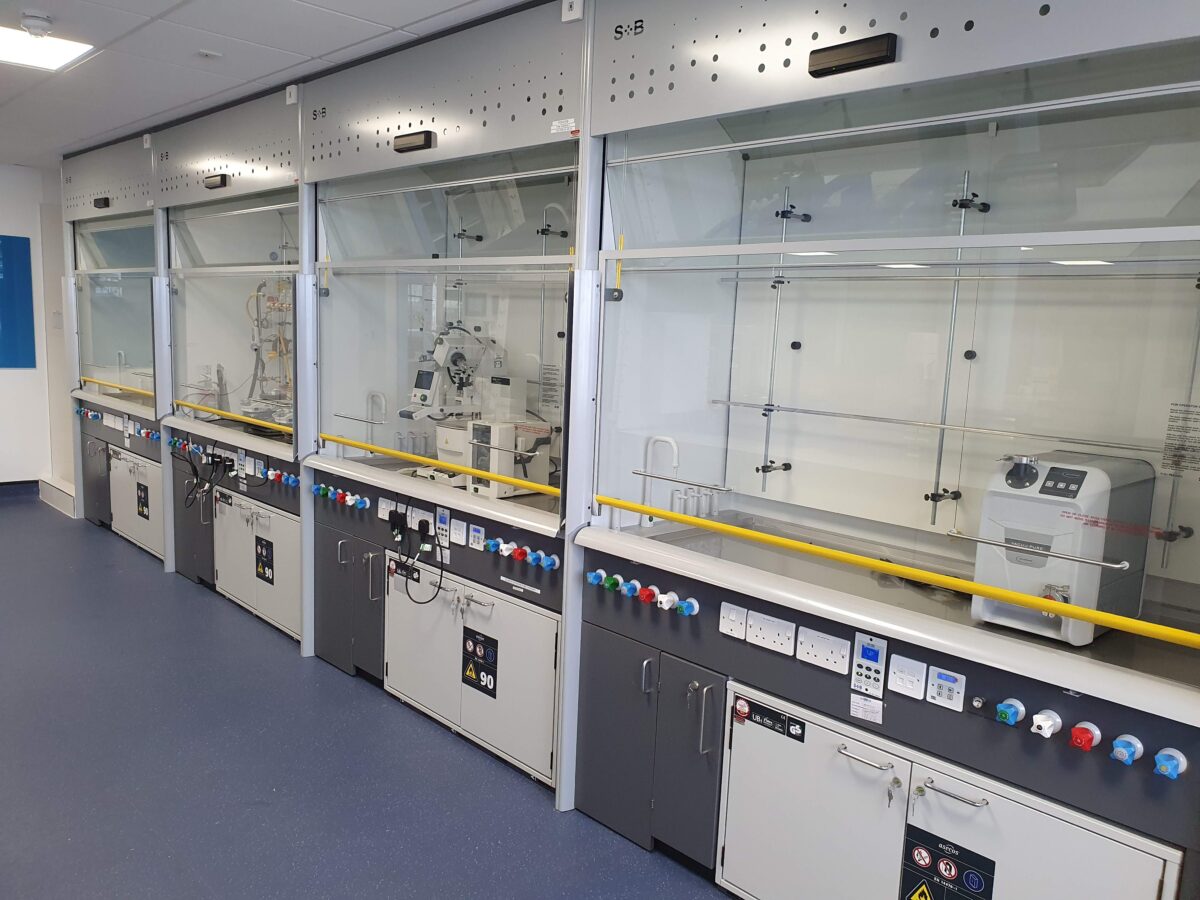Proper storage of chemicals in laboratories is crucial not only for safety reasons, but also to ensure the efficient operation of the lab.
In this guide we’ll look at how laboratory storage helps you to get the job done safely and efficiently, with some tips on best practice for lab chemical storage.
How much storage do you need?
Lab storage is not just a matter of overall capacity. Different chemicals must be stored separately from one another, so there is no risk of an adverse reaction if they come into contact.
This is especially true of different categories of chemicals, for example:
- Acids
- Corrosives
- Flammables
Calculate how much secure storage you need for each type of chemical separately, and keep in mind that any spare capacity for one type cannot be used to store another.
Make lab storage work for you
Think about where you want each chemical to be. Hazardous chemicals might be better stored close to floor level to mitigate the risks of spillage. Some chemicals can be stored safely higher up, and it might be better for your productivity and long-term comfort to have these stored where you can reach them without bending down. Liquids and heavy containers should be stored as low down as possible, and certainly never above shoulder or head height. Mobile and sliding cabinets are a good option that allow you to rearrange later.
Fume cupboard storage
Fume cupboards are not storage in themselves and should only be used to hold the chemicals currently in use. As such, it’s sensible to include storage under fume cupboards, which can also be connected to your extraction and ventilation system to expel unwanted fumes. In some cases, chemicals require ventilation at all times, so these should always be stored in a cupboard connected to an appropriate extraction system.

Fire-resistant storage
Hazardous and especially flammable chemicals might require fire-rated storage cabinets, potentially with a fire suppression system or fire alarm fitted. These should always be stored in an appropriate cabinet, to prevent the spread of fire in an emergency and to ensure personnel can evacuate in a safe and orderly fashion in an alarm.
Best practice for lab storage labelling
Make sure all your lab storage cabinets are clearly labelled and, ideally, use a colour code system to indicate which cupboards are for flammables, corrosives and so on. Use suitable secondary containers for corrosive materials to catch spills and protect your cabinets.

Best practice for waste chemical disposal
Finally, don’t dispose of waste chemicals into the public drains or in any way that could put the surrounding environment at risk. It’s good practice to have a formal waste chemical disposal procedure in place, which spells out any third-party consultancy or assistance you need on a regular basis.
Ask the experts
S+B provides specialist consultancy services in laboratory science and engineering. If you need any more help with the correct storage and disposal of laboratory chemicals, please contact us to speak to our expert team. We can advise on the installation of new laboratory storage and fume cupboards, so that no matter what chemicals you work with, you can do so safely and productively.
S+B UK
S+B is the UK's leading specialist in the design and manufacture of innovative furniture systems for Laboratory & Educational environments.
We work with schools, universities, healthcare and pharmaceutical facilities and industries such as food and beverage, oil and gas and others with Research and Development emphasis.

How to properly store chemicals in the lab